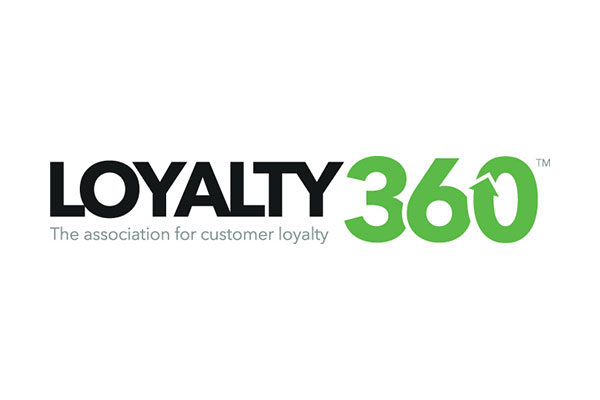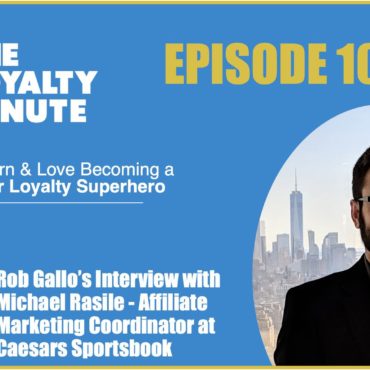[ad_1]
Customer loyalty programs are nothing new to grocery giant Kroger Company, having been in place now for decades. But today’s changing shopping landscape and demands for added convenience and faster service have advertisers searching for the best ways to reach customers.
Mark Johnson, CEO of Loyalty360, spoke with Vice President of Product Strategy & Innovation at Kroger Precision Marketing at 84.51°(KPM), Michael Schuh, about the challenges brands face in the growing digital shopping universe and what KPM is doing to service those brands.
KPM Encourages Brands to Engage with Online Customers
KPM was founded five years ago as the retail media business of Kroger powered by 84.51° data science The organization aims to unleash first-party data assets for the advertising ecosystem to encourage brands to engage with customers across all digital channels in a meaningful and impactful way.
“We are about driving the right media accountability and effectiveness for brands by closing the loop between media exposure and store sales,” says Schuh.
No matter where the media exposure happens – on Kroger digital properties, across the open web, on mobile apps or on streaming platforms – the company aims to tie that exposure back to a sale, in-store, online or in-app.
Recently KPM expanded access to on-site advertising inventory, giving advertisers more options to buy product listing ads on Kroger e-commerce sites. On-site advertising inventory is defined as the general product listing results customers see when filling their online shopping carts.
KPM Integrates Ad Management Platforms
KPM recently expanded access to that inventory to three different advertising management platforms: Pacvue, Skye and Flywheel Digital. These platforms enable advertisers to engage and interact with Kroger customers at point-of-purchase online utilizing tools they already use elsewhere
.
The high rate of acceleration of online e-commerce has created excellent opportunities for brands to earn space on the digitally constrained online shelf, but there is also a high level of effort to execute those campaigns. KPM’s integration of the ad management platforms gives the brands more control and flexibility, especially when managing a high volume of campaigns.
Says Schuh, “The win for advertisers is flexibility and ease, meeting them where they are with tools they are already familiar with. This enables them to interact with Kroger customers at point-of-purchase online to drive share of category and sales lift.”
As of now, the platforms work traditionally with CPG brands that are already sold in-store. Kroger has 2700 store locations, and the brands they sell through their digital channels are the same products a customer can purchase in-store. However, there is an opportunity for additional brands that are not a part of the in-store inventory to sell online.
Content-rich zero or first-party behavioral data collected entices new brands to buy advertising through Kroger to get in front of those consumers.
Building Solutions for Customers and Advertisers
Kroger has managed a successful loyalty program for decades, founded on a trusted value exchange with its customers. The more a customer shops, the more they earn. Whether it is price discounts, fuel points or community rewards, there is a tangible value in scanning the loyalty card during any transaction, in-store or online.
Scanning or inputting the loyalty card number gives Kroger a direct link between the loyalty card and the customer’s digital account.
96% of Kroger sales are connected to loyalty accounts. This gives the company the opportunity to provide value back to customers in the form of not only price discounts and fuel points at the point of transaction, but personalized messaging throughout the digital experience. It is important to note that the digital experience is not limited to the Kroger website or shopping app, but anywhere across the web where the consumer comes in contact with the brands.
“Nobody needs more advertising,” Schuh explains. “They need to feed their family and pack lunches, find a new fun recipe to cook at home. Through our loyalty program, we have this value exchange with customers where they understand the value and appreciate their relationship with us as their favorite grocery retailer.”
KPM works to drive inspiration through the purchase journey, making it easier for both customers and advertisers to move from inspiration to purchase. The real value of online sales is minimizing that distance.
By disrupting the customer experience and brand experience, brands change the way they think about advertising dollars and performance marketing versus brand building.
“We believe our data asset has a major role to play not in just driving relevancy and experience, but in holding the investment accountable to business outcomes,” Schuh explains.
Online Shopping Win-Win
While online shopping may be more convenient for consumers, it is also more lucrative for brands and advertisers. Online shopping carts at Kroger are filled with two to three times as many items as customers’ in-store baskets.
To make that experience more personalized and easier for the customer, and more beneficial for the advertiser, KPM analyzes sales data from prior purchases and uses that history to create a front-page listing of frequently bought items for consumers to point and click. This shortens the customer’s shopping time and drives brand loyalty by having relevant items show up every time the customer logs on.
Digital Media Impacts Online and In-Store Sales
Between 2019 and 2020, grocery e-commerce activity nearly doubled overnight. Kroger’s investment in creating a seamless online and in-store shopping ecosystem years prior met the needs of their customers during those chaotic times and as behaviors continued to change.
Grocery customers shop across channels. Even loyal e-commerce households do not shop strictly online. While that client may place a large online order every week, they are still likely making short in-store trips for fresh produce or meat. KPM found digital media and advertising impacts in-store shopping even more than online. The largest percentage of sales still occur in-store.
“The digital media we serve on behalf of brands using our data has a huge impact on in-store shopping as well,” says Schuh.
Retail media continues to grow as brands see the impact and appreciate the ability to close the loop between media exposure and sales. Brands make investments and see what it means to drive their business forward.
The goal for CPGs used to be product performance and placement. Today, that end goal is relevancy, speaking to customers in a way to optimize performance. The best way to structure this is to be beneficial for all parties.
Says Schuh, “Our focus has been on two things. First, solving for brand outcomes, proving results no matter how brands are investing with us across our different omnichannel ad units or relationships. And secondly, developing deep relationships with major agency holding companies because they are big purveyors of how brands spend their dollars and execute effectively.”
Technology Ecosystems Are Simultaneously More and Less Complex
In 2021, KPM generated 2 trillion personalized recommendations for its customers in real-time. Personalization science enables brands to be most relevant wherever they are trying to reach customers and with whatever KPIs they measure. KPM discovered a 20 to 40% lift in sales compared to non-personalized experiences.
Tying in both personalization science as part of the experience drives relevancy as well as using technology to help with decision-making in real-time. Whether customers are on the app or on the home page, there is only one moment to get it right.
“How right you get it dictates the customer's experience, the loyalty they continue to curate with the retailer, and how often they will return to repeat the purchase.”
Being Relevant to Customers in The Moment is Crucial
When a customer is shopping digitally or in-store, they are shopping with the intent to buy in real-time. A brand’s goal is to have its product be a relevant part of that experience. In-store, a customer is exposed to hundreds of products in front of them at once, whereas online shoppers see ten items on the first page, even less on the mobile app. Being part of that experience and being relevant to customers at that moment is critical to a brand.
CPGs have an important role to play in bringing forward relevant content to their customers wherever they are consuming media. A Kroger customer isn’t just a customer in-store or on the Kroger website. Streaming services, across the web, and mobile apps are perfect opportunities to connect with customers on a personal level. Using the right message, the right experience at the right time will create that bridge to commerce and make it easier for the customer to engage with the brand.
This type of loyalty goes way beyond traditional measures of success such as click-through rates. These personalized and cross-channel experiences have the potential to drive incremental penetration, category growth shares and sales in general.
[ad_2]
Source link




